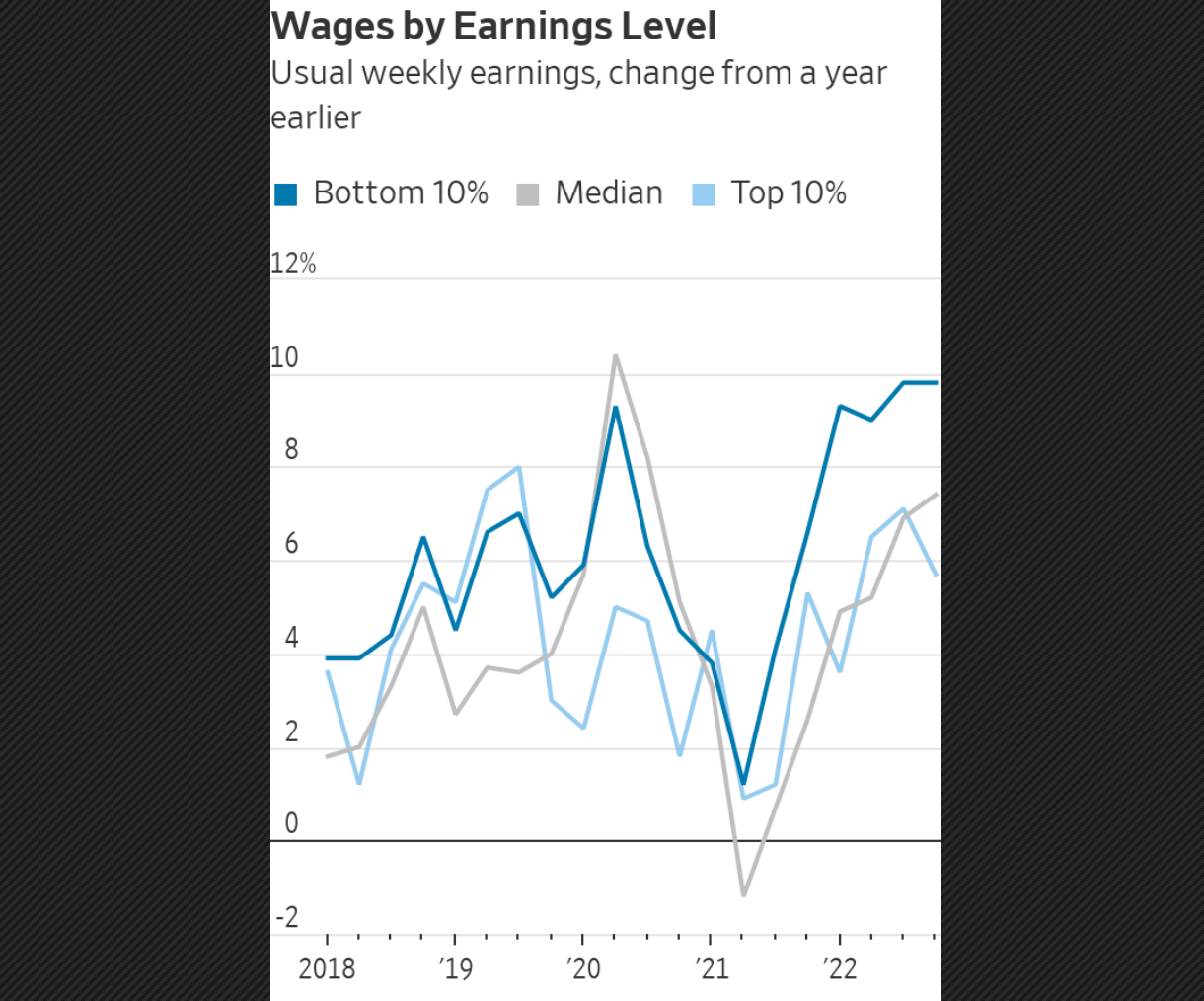Working-class Americans, those in the bottom tenth of wage earners, scored a nearly ten percent wage hike over the last year thanks to a tight labor market, the Wall Street Journal admits.
In 2022, compared to the year prior, Bureau of Labor Statistics data shows that wage earners at the bottom of the income scale saw the largest wage increases all thanks to a tight labor market weighted toward employees rather than employers.
While wages across the board increased 7.4 percent in 2022 compared to 2021, that rate only slightly exceeded the rate of inflation which stood at 7.1 percent by the end of 2022.
The Journal reports:
Black workers, young workers and people on the bottom of the income scale were among those who saw the largest pay increases last year, when employers were readily handing out raises in a tight labor market and high inflation environment. [Emphasis added]
…
For some workers, the gains were even larger. The median raise for Black Americans employed full time was 11.3%, compared with the prior year. Weekly pay for workers between 16- and 24-years old rose more than 10%. The bottom 10th of wage earners—those that make about $570 a week—saw their pay increase by nearly 10%. [Emphasis added]
Weeks ago, White House Council of Economic Advisers member Jared Bernstein noted that tight labor markets are a win for working and lower-middle-class Americans as it gives them stronger negotiating power over business.
Some data, though, suggests that President Joe Biden’s insistence on having millions of low-wage border crossers and illegal aliens join the labor market since 2021 has slowed down gains for the lowest of wage earners — those most likely to compete against these new arrivals.
For example, the average American without a high school degree was making about $675 per week by the end of last year which represents a less than four percent increase compared to the same time in 2021.
Similarly, Americans with only a high school degree experienced a 5.3 percent wage hike, lower than the 5.5 percent boost for those with a bachelor’s degree or more.
The Journal, often an advocate for mass immigration, admits that “wage gains for the less educated plummeted as more low-skilled jobs” often by newly arrived foreign workers who are willing to accept poor benefit packages, grueling hours, unsanitary workplaces, and lower wages.
For decades, the United States has annually admitted more than a million foreign nationals on green cards who will eventually be allowed to secure naturalized American citizenship and another million foreign nationals on temporary work visas.
This huge inflow of legal immigrants is in addition to the hundreds of thousands of illegal aliens who are added to the U.S. population every year, including tens of thousands who arrive to take American jobs that could otherwise go to Americans.
Altogether, the nation’s mass immigration policy has lent itself to flooding the U.S. labor market with cheap, low-wage foreign workers who compete directly against blue-collar and white-collar Americans for limited jobs.
Researchers have found that a flooded labor market can easily diminish job opportunities and wages for Americans.
One study by the Center for Immigration Studies revealed that for every one percent increase in the immigrant portion of an American worker’s occupation, said worker’s weekly wages are cut by perhaps 0.5 percent. This means the average native-born American worker has his weekly wages reduced by potentially 8.75 percent as more than 17 percent of the workforce is foreign-born.
John Binder is a reporter for Breitbart News. Email him at jbinder@breitbart.com. Follow him on Twitter here.


COMMENTS
Please let us know if you're having issues with commenting.